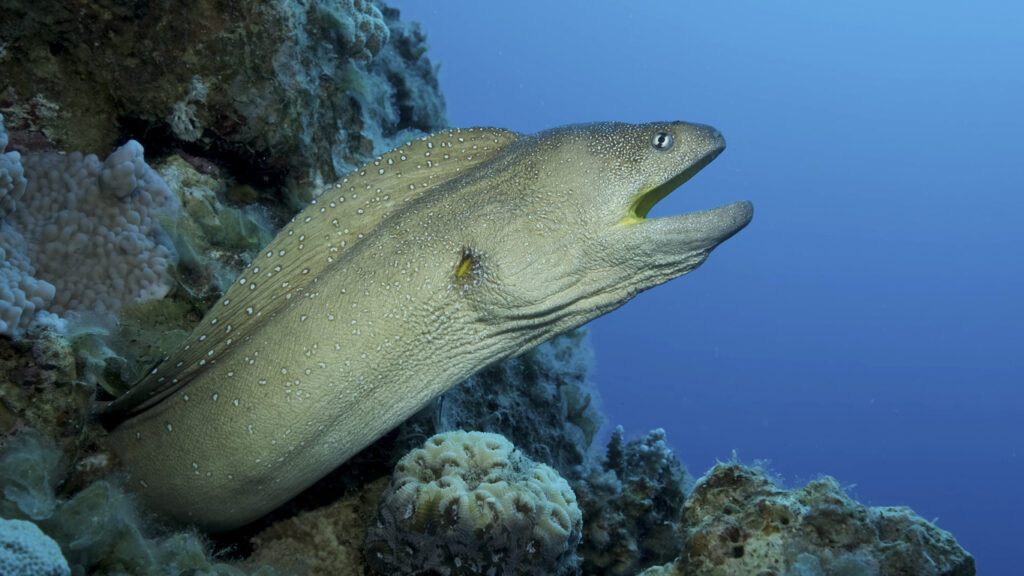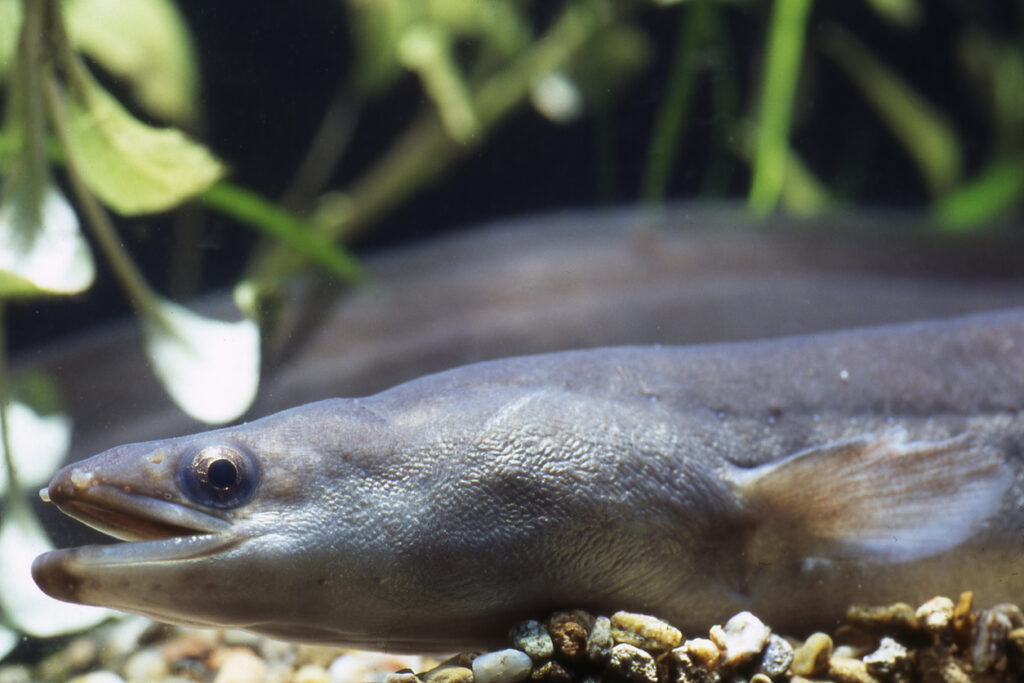These slippery creatures are mysterious, shadowy fish that are recognised for being more snake-like. If you don’t know much about eels, you’re in for a treat as we dive in and learn a little more about these powerful and fascinating animals. You can of course come and see our eels up close and personal at our Coral Seas exhibit!
They may not be the most attractive sea creatures, but eels are incredibly diverse and have some really interesting features. So, let’s learn a little bit more…
Is an eel a fish?
As eels have an appearance closer to a snake or a worm, you’d be mistaken for thinking that these animals aren’t a fish at all – but you’d be wrong! Eels (Anguilliformes) are fish, with gills and a singular fin. They are mostly freshwater fish, but some species are also found in saltwater.
Eels can range from just a few centimetres long, to up to over 3 metres long. The longest known eel is the Slender Giant Moray eel, measuring just under 4 metres, while the heaviest eel is the European conger coming in at around 72kg. Their elongated, wormlike bodies have no pelvic fin, but they do have a continuous dorsal, anal and caudal fin.
Eels differ from traditional fish in that eels have no scales – instead, their body is covered in a protective mucus layer than can also hold water. This allows eels to breathe on dry land for a few hours, which might happen in a dry spell.
Eels have rows of razor sharp teeth, and can vary in colour depending on species. Some are grey and black, while others can be much more colourful.
How many species of eel are there?
Eels are incredibly diverse, with over 800 species! This is broken down into 19 families, which includes general eels as well as moray eels and conger eels. Each of these types differ slightly – for example, moray eels have small, rounded gill openings and generally lack pectoral fins. Moray eels also have two sets of jaws! Conger eels have more vertebrae than the common eel, and their upper and lower jaws are the same length. In a common eel, the lower jaw projects from the upper.

Some of the families of eels include:
- Freshwater eels (Anguillidae) such as the European eel
- Conger eels (Congridae) such as the European and American congers
- Moray eels (Muraenidae) such as the Giant moray eel and Honeycomb moray eel
You can see the Honeycomb moray eel for yourself here at Bristol Aquarium, which get their name from their white-yellow body with black spots.
You’ll be surprised to know that the electric eel isn’t actually part of the eel family at all – it’s a species of knifefish!
Habits and lifecycle of an eel
Eels begin their life as leptocephalus (larva) which are flat and transparent. They enter an extended larval phase, which can last between 4-12 months, before undergoing a rapid metamorphosis to a juvenile stage. A juvenile eel is just a smaller version of the adult. Maturity is reaching after around 10 years in freshwater eels, but it might be earlier in tropical species. When a freshwater eel reaches sexual maturity, it will return to the ocean to spawn and then pass away.
With this in mind, eels are catadromous, which means they are born in the ocean but then spend most of their life in rivers and streams, only to return to the oceans to spawn and finish their life. Eels are also nocturnal, feeding at night but hiding under rocks, logs and mud at the bottom of the water during the daytime.
Eels are typically solitary during their juvenile and adult lives, but there are some instances where they might be seen in groups. For example, garden eels live in vast colonies of several hundred in tropical reef areas. Some will live alone but may hunt in packs.
Interestingly, eels can swim backwards! They move by generating waves that travel the length of their body, which is very similar to a snake. They then simply reverse this movement to swim backwards, which they might do in order to search for their prey.

What do eels eat?
Eels are predatory and follow a carnivorous diet. They typically eat smaller fish, invertebrates, crustaceans, shrimp, crab and sea urchins. Some will also eat insect larvae, and other species of eel are known to be cannibals!
Eels do have some predators, including larger fish and seabirds such as herons. Some mammals will also eat eels including racoons and humans. Eel is a popular item in many Japanese restaurants, although only some parts of the eel are safe to eat.
Why not plan your visit to Bristol Aquarium and come see our collection of Honeycomb moray eels for yourself? Check out our opening times and show off your new knowledge to your friends and family!
